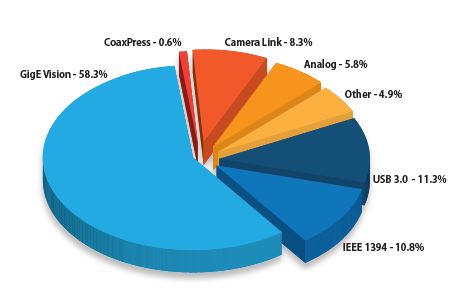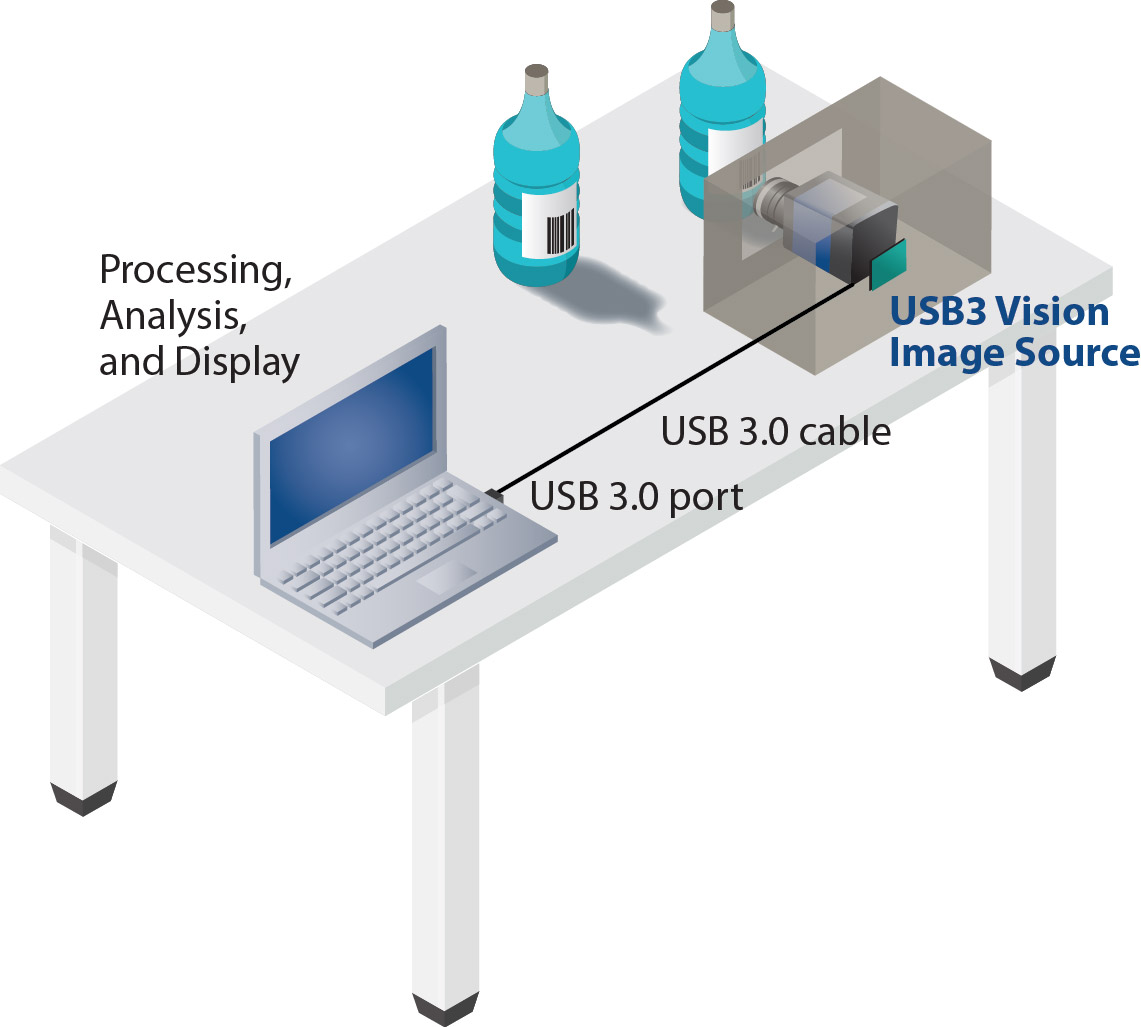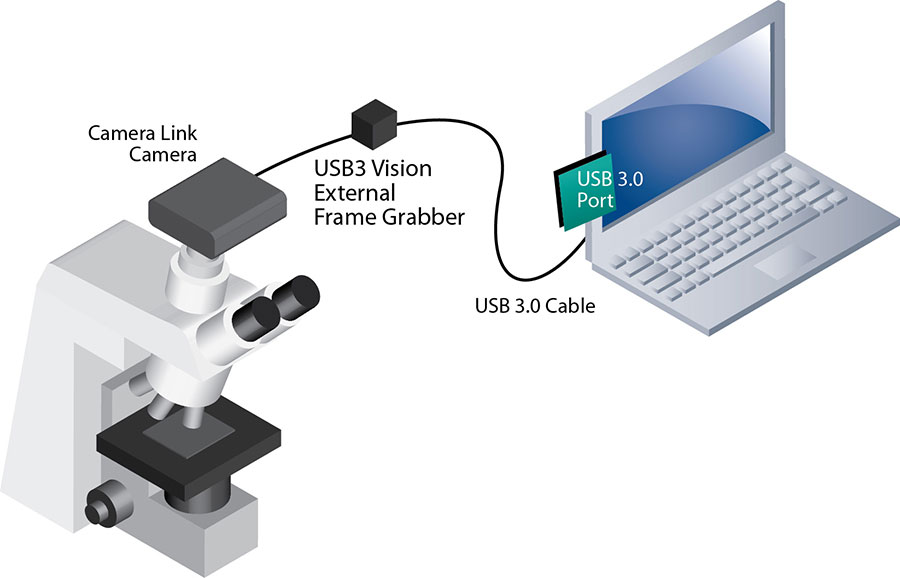USB Brings Cost and Connectivity Advantages to Imaging
As published in Quality Magazine
USB is the most prevalent method to connect computers and peripheral devices. Taking a survey of my desk there are a multitude of devices – a smartphone, headphones, a camera, mouse and keyboard – that rely on a USB connection.
Thanks in large part to its ease-of-use, USB dominates consumer-to-computer connectivity applications and is being rapidly adopted across other markets. For example, home-based medical devices that track general health, or more complex systems that monitor a patient’s response to therapy, benefit from the plug-and-play simplicity of USB.
Often these products store data in memory until they are plugged into a PC. Data can be analyzed locally – a fitness tracker shames us into moving more – or is transferred to a physician’s office for evaluation. For the majority of these applications, USB is a simple method to support the bandwidth required to transmit data-intense information. However, there’s no real-time requirement for data delivery. The few seconds its takes to transmit data from the device to the computer doesn’t impact a patient’s or physician’s ability to monitor health or a response to treatment.
The same is not true in machine vision, where automated decisions must be made within milliseconds or faster. As a result, the imaging industry was initially slower to adopt USB as an interface option due to its previous transmission limitations. As the USB standard has evolved and bandwidth capabilities have increased, new opportunities for the technology are emerging in the traditional imaging market. More so, as machine vision moves into new markets, USB is a recognizable and easy-to-use interface for less technical end-users.
USB and Machine Vision
While USB interfaces have been widely adopted across other markets, the bandwidth supported by earlier versions of the standard was insufficient for imaging applications requiring uncompressed, raw data for real-time image analysis. This changed with the third major version of the USB standard – USB 3.0 or SuperSpeed USB – which provides 10 times the bandwidth of USB 2.0.
Backed by this bandwidth boost, the vision industry ratified the USB3 Vision standard in 2013, providing designers with a framework to address performance, cost, and usability requirements in real-time imaging systems. Data is transmitted directly to existing ports on a computer with sustained throughputs approaching 3 Gbps; surpassing the performance of Camera Link Base configurations and rivalling Medium configuration, but without requiring specialized frame grabbers at endpoints to capture data. By eliminating the need for frame grabber cards, designers can choose from a wider range of computing platforms, including laptops, tablets, and single-board or embedded processors.
While the imaging industry adopts USB 3.0, the USB Implementers Forum (USB-IF) is continuing to evolve the technology. As computing devices get thinner, USB-C is now an increasingly common connecter to transmit data and power for new laptops. The USB 3.1 Gen 2 protocol offers 10 Gbps data transfer and 100 watts of power. More recently, the USB-IF announced USB 3.2 with a theoretical maximum data transfer rate of 20 Gbps.
Advantages and Challenges of USB3
While GigE Vision dominates the machine vision interface market, USB 3.0 has quickly reached deployment levels that rival more established solutions (Figure 1). Bandwidth has been a major driver for the initial adoption of USB3 Vision, but manufacturers shouldn’t ignore its cost and design advantages.

The thinner, lighter USB 3.0 cable is easier to route than bulky Camera Link cables and connects with “plug-and-play” ease, allowing faster setup and teardown of inspection stations. To enhance reliability, the USB3 Vision standard specifies locking connectors for the cables.
Video, control data, and power are transmitted over a single cable, reducing cabling complexity and eliminating the need for an external power supply for cameras, resulting in reduced cost and system footprint. USB 3.0 reduces system overhead and CPU usage by using asynchronous signaling, rather than the polling mechanism of USB 2.0, and direct memory access (DMA) transfers. As a result, more processing power can be dedicated to the vision application.
USB3 Vision is building a strengthening market position in vision applications that value high-bandwidth point-to-point video transmission. While the inherent networking and multicasting of GigE Vision is advantageous in multi-image source and endpoint systems, multiple USB 3.0 cameras can operate in parallel on a single bus by employing an off-the-shelf USB 3.0 hub. In comparison, each Camera Link camera would require its own dedicated cable and frame grabber.
Distance remains the last hurdle for USB 3.0 interfaces. Multiple vendors now provide active cabling solutions that extend the potential distance between imaging sources and processing units far beyond the initial three to five meter range.
USB3 Vision in Imaging Applications
Virtually every camera manufacturer now offers USB 3.0 products, while external frame grabbers are also available that convert images from existing cameras into a USB3 Vision video stream. USB3 imaging devices are being designed into a number of applications that require high resolution and frame rates, including document scanning and print verification.
Barcode print verification systems help lower costs, increase productivity, and reduce errors by providing detailed quality analysis to ensure high read rates in automated quality inspection and warehouse processes. If printing errors are not detected quickly and automated reading systems can’t identify the product, barcodes may need to be manually entered into supply chain systems or unverified products must be destroyed. This results in disrupted manufacturing processes and additional costs.

Print verification systems rely on machine vision hardware and software to ensure barcodes meet industry standards for readability in automated processes. USB3 Vision imaging products can help lower the costs of these systems by identifying unreadable barcodes early in the manufacturing processes.
In this application, the portable barcode verification unit employs a CMOS image sensor to capture a high-resolution image of the barcode. The video feed is converted into a USB3 Vision image stream and transmitted over an off-the-shelf USB 3.0 cable directly to a port on a computing platform where barcode readability is verified. By eliminating the need for a PCIe frame grabber to capture image data, system designers can employ lower-cost computing platforms, including laptops, for barcode analysis and verification. In addition, power over USB simplifies cabling and lower component costs.
Ease-of-use is another key advantage of USB 3.0 video connectivity, particularly in applications where end-users are not vision experts. Microscopy systems for medical quality inspection uses often use a Camera Link camera to transmit images to a computer for analysis and display. The Camera Link video interface requires bulky, specialized cabling and a PCIe frame grabber to capture images at the computer, resulting in more complex systems, higher costs, and limited component selection.
Instead, external frame grabbers can convert the Camera Link image feed into USB3 Vision-compliant video. The uncompressed video is transmitted with low, consistent latency directly to an existing USB 3.0 port on a laptop used for analysis and display. The plug-and-play performance of USB 3.0 allows for faster setup and teardown of inspection stations.

The Future of USB in Vision
The vision market is increasingly leveraging expertise developed for other markets to help deliver advantages in imaging applications. Gigabit Ethernet, USB 3.0, and more recently NBASE-T are all examples of networking technologies bringing new cost, performance, and usability benefits to automation systems.
As imaging manufacturers and system integrators adopt USB 3.0 into their products, we will all be watching closely to see how quickly the consumer market adopts higher-bandwidth USB interfaces. As more devices on our desks begin to support USB 3.x and beyond, we can expect the next wave of higher bandwidth imaging devices for the automation market.